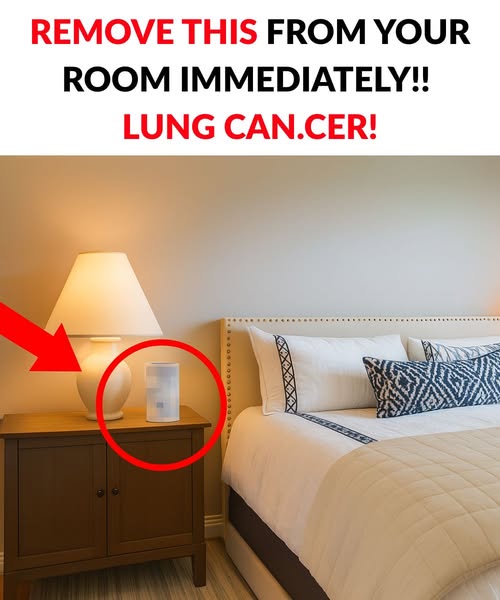Cancer is undeniably one of the toughest and most feared diseases we face today. Its origins are complex, often stemming from a mix of genetic predisposition, immune system imbalances, and environmental triggers. While most people associate carcinogens with industrial pollution or cigarette smoke, few realize that many of the biggest culprits may be sitting quietly in their own homes. From air fresheners to common receipts, everyday items can release harmful chemicals that may lead to serious health issues over time. Let’s dive into six surprising household items that could increase your risk of cancer—and how you can reduce your exposure.

1. Scented Candles and Air Fresheners
These are popular choices for freshening up living spaces and bathrooms, but behind those pleasant scents may be some serious health hazards. Many scented candles and air fresheners contain ingredients like limonene and phthalates.
Limonene, while naturally occurring and often used for its citrusy smell, can transform into formaldehyde—a known carcinogen—once it interacts with the air. Exposure to formaldehyde has been linked to liver toxicity, breast and lung cancer, and inflammatory reactions. Pregnant women and developing fetuses are especially vulnerable to its effects.
Phthalates, another common ingredient, help fragrances linger longer. However, they are endocrine disruptors and can interfere with hormone balance, increase the risk of liver cancer, and harm reproductive development.
In addition to these risks, burning scented candles indoors may raise carbon monoxide levels, causing symptoms like dizziness, headaches, and nausea. If you must use them, choose natural alternatives and keep your home well-ventilated.
2. Humidifiers
Humidifiers are great for adding moisture to dry air during winter or in air-conditioned homes. But if not maintained properly, they can quickly become breeding grounds for harmful bacteria and mold.
Studies have shown that even purified or distilled water can harbor microbes after sitting in a humidifier overnight. If left unchecked, the stagnant water encourages the growth of dangerous bacteria like Legionella, Pseudomonas aeruginosa, and Streptococcus pneumoniae. These can cause respiratory infections and exacerbate asthma or allergies, especially in children.
To keep your humidifier safe, clean the tank thoroughly every other day and allow it to dry out completely when not in use.
3. Dry Cleaned Clothing
Delicate clothing that requires dry cleaning might come back looking great, but it could also be covered in toxic residues. Most dry cleaners use a chemical called perchloroethylene (or “perc”), a solvent derived from petroleum.
Perc is classified as a likely human carcinogen. Long-term exposure has been linked to cancers of the bladder, uterus, and esophagus. Inhaling these chemicals—even in small doses—may lead to symptoms like dizziness, memory issues, skin irritation, and fatigue.
To protect yourself, remove the plastic covering from dry-cleaned clothes immediately and hang them in a well-ventilated area for a few hours before storing them in your closet.
4. Cash Register Receipts
Those little slips of paper might not seem like a health threat, but they can contain bisphenol A (BPA), a chemical used in the thermal printing process. BPA is a well-known endocrine disruptor and can interfere with the body’s hormone system.
Prolonged contact with BPA has been associated with a wide range of health problems, including early puberty, reproductive issues, obesity, diabetes, and cancers of the breast and uterus. BPA can be absorbed through the skin, so it’s best to handle receipts as little as possible. Hold only the non-printed edges, and don’t store them in your wallet or pockets.
5. Hairbrushes
Your hairbrush could be hiding more than just loose hairs. These tools often accumulate bacteria, dead skin cells, oil, and even fungi. If left uncleaned, they can lead to scalp problems like itching, dandruff, folliculitis (inflammation of hair follicles), and even hair loss.
To avoid these issues, clean your brush at least once a week. Soak it in warm, soapy water for about 10 minutes, then use an old toothbrush to scrub it thoroughly. Let it dry completely in sunlight to kill off any lingering germs.
6. Remote Controls
They’re in every home, touched daily, and rarely cleaned—TV remotes are prime real estate for bacteria. Studies have found that remotes can harbor pathogens like Staphylococcus aureus, E. coli, pneumococcus, and Enterococcus faecalis. These bacteria can lead to a variety of infections including skin problems, pneumonia, gastrointestinal distress, and urinary tract infections.
Remote controls in hotel rooms are particularly risky due to frequent handling and lack of cleaning. Always wipe down remotes with disinfectant wipes or alcohol-soaked cloths, especially while traveling or during cold and flu season.
While it’s easy to assume our homes are safe havens, they can also harbor hidden dangers. Fortunately, a little awareness and regular cleaning can go a long way. By being proactive—ventilating your rooms, maintaining appliances, and avoiding prolonged contact with harmful substances—you can reduce your exposure to everyday carcinogens and help protect your family’s health. Prevention starts at home.





